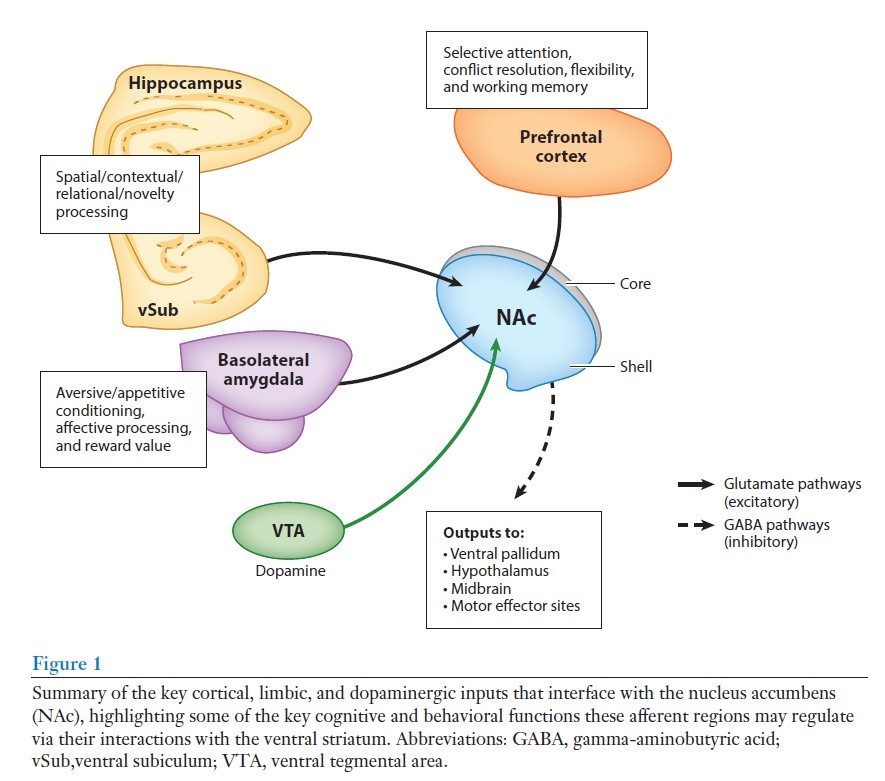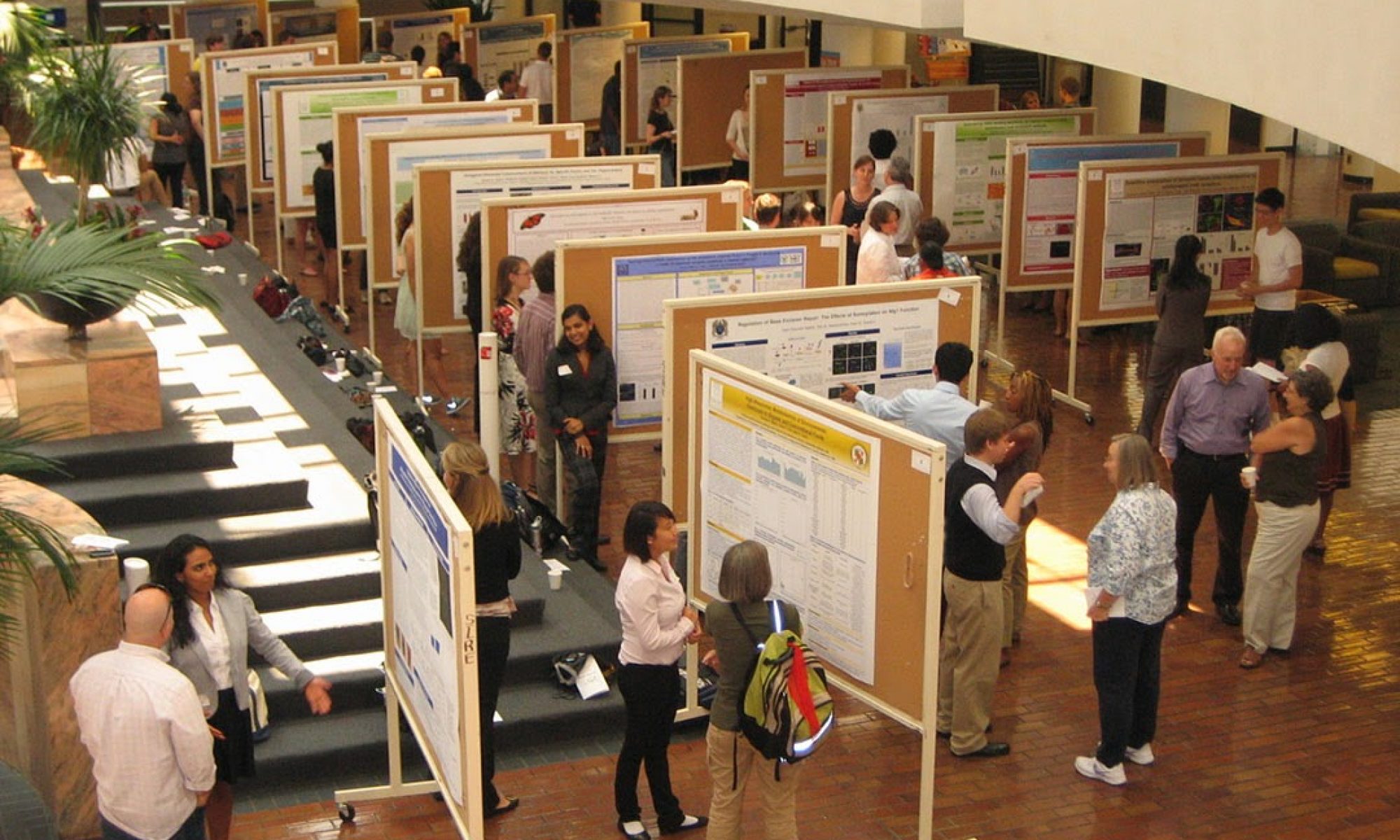Danial Arslan – 11/07/17
RESEARCH UPDATE: I am currently learning about the current and past research being conducted in my lab and in other similar labs at Emory by attending talks held on campus as well as through weekly lab meetings where graduate students in the lab share articles they find interesting and discuss their recent findings. I am also going through the long, arduous process of gaining clearance at Yerkes to work on prairie voles, which includes learning how to operate on them in the most humane way while following aseptic techniques. However, to completely understand the complexity and significance of the research being pursued in the lab, my graduate mentor assigns a review paper to me on a weekly basis to bolster my basic understanding of Neuroscience. We then get together and discuss the paper after the weekly lab meeting. This week I read about the Nucleus Accumbens and the following blog is a brief introduction into the role and significance of this portion of the brain. To view my previous blog to read more about my research and goals click here.
To access the paper, I was assigned to read and from which the information below is taken, click here.
Since the discovery of the nucleus accumbens (NAc) in 1975, there has been extensive research on this compartment of the brain, especially in terms of the role this portion plays in providing motivation behind actions and ascribing ‘rewards’ to certain behaviours, such as after consuming drugs or food or after indulging in sexual acts. (Mogenson et al., 1993) As a result, this portion of the brain is colloquially referred to as the ‘pleasure center’ of the brain.
However, recently there has been a shift in the understanding of the role of the NAc in the brain, and with it there has been a shift in the research being done on this sector. This is what my assignment for this week was. To understand how the NAc worked and what had brought about the changes in its’ understanding.

The brain is divided into 3 portions. The cerebrum, which is the largest part of the brain, is responsible for controlling all voluntary actions, and is broken down into a series of lobes. Each lobe has a different brain function. (Picture adopted from Wikipedia).
The nucleus accumbens is extremely interconnected with the limbic system of the brain. behavior. It is proposed that the NAc receives mnemonic and emotional cues from nodes in the frontal and temporal lobes of the brain and relays the nervous impulses it receives to particular motor neurons to stimulate a set of responses. Since the NAc can prioritize the sequence of responses, therefore, it can influence the type and intensity of behaviour an organism expresses to a certain cue.

The limbic system of the brain. The parts of this system play a role in motivation, emotion, learning, and memory. (Picture adopted from Pearson.com)
The NAc can be broken down into two components based on its connectivity to other regions, namely the inner ‘shell’ and the outer ‘core.’ Impulses from various regions of the limbic region enter the NAc in particular sub regions leading scientists to speculate that the two portions play distinct roles. Within each region, there is an assemblage of cellular clusters, each of which receives impulses related to a particular type of input signal.
The impulses received by the NAc involve the excitatory neurotransmitter dopamine whereas the impulses which subsequently leave the NAc make use of the gamma-aminobutyric acid (GABA) neurotransmitter. By using this inhibitory GABA neurotransmitter, the cells in the NAc cannot stimulate the same motor neurons for prolonged periods of time (Pennartz et al. 1994, Uchimura et al. 1989). This means motivationally developed patterns of behaviour could not be formed by the activation of the neurons leaving the NAc and therefore changes in behavioural patterns must be formed due to changes in the excitation of the NAc by the incoming neural impulses transmitted from the temporal and frontal lobes through the glutamine neurotransmitter.
Therefore, it can be argued that the NAc is analogous to a messenger which passes information from the receiving end to the outgoing ‘motor’ end and that which outgoing pathway it conveys the message to or how many times it conveys the message is based on the suggestions or commands from the cortical and limbic regions of the brain rather than it being based on the judgement and determination of the NAc itself. One could say that the NAc acts like a ‘servant to many systems’ rather than acting like a decision-making center where it would ascribe responses on its own.

Figure adopted from the review paper.
Research findings also show that the reward-related actions which have been previously attributed to the NAc do not appear to in fact require the NAc at all. Reynolds & Berridge (1998), for example, showed that inactivating the NAc did not reduce food consumption by rats, but instead seemed to increase their appetite signifying that they were finding food consumption to be more rewarding when the neural activity of the NAc was suppressed. Moreover, Berridge KC (2007) found that hedonic reactions exhibited after consuming food seemed to be independent of whether the NAc was suppressed or not. In conclusion, the pattern of actions done by individuals, related to gaining a ‘reward’ seems to be independent of the functioning of the NAc.
Therefore, the persistence to show that the neural accumbens as the ‘pleasure and reward system’ of the brain, might actually be a gross simplification and exaggeration of what the function and role of the neural accumbens in our brain really is. As a result, this particular portion of the brain continues to garner vast interest within the Neurobiology community, even 40 years after its discovery.
REFERENCES:
- Berridge KC. 2007. The debate over dopamine’s role in reward: the case for incentive salience. Psychopharmacology 191(3):391–431
- Berridge KC, Robinson TE. 1998. What is the role of dopamine in reward: hedonic impact, reward learning, or incentive salience? Brain Res. Rev. 28(3):309–69
- Pennartz CMA, Groenewegen HJ, Lopes Da Silva FH. 1994. The nucleus accumbens as a complex of functionally distinct neuronal ensembles: an integration of behavioural, electrophysiological and anatomical data. Prog. Neurobiol. 42(6):719–61
- Uchimura N, Cherubini E, North RA. 1989. Inward rectification in rat nucleus accumbens neurons. J. Neurophysiol. 62(6):1280–86
- Mogenson GJ, Brudzynski SM, Wu M, Yang CR, Yim CY. 1993. From motivation to action: a review of dopaminergic regulation of limbic→nucleus accumbens→ventral pallidum→pedunculopontine nucleus circuitries involved with limbic-motor integration. In Limbic-Motor Circuits and Neuropsychiatry, ed. PW Kalivas, CD Barnes, pp. 193–263. Boca Raton, FL: CRC Press
- Floresco, S.B., 2015. The nucleus accumbens: an interface between cognition, emotion, and action. Annual review of psychology, 66, pp.25-52.
A 2 minute recap on the nucleus accumbens and what was discussed in this blog.


Wow, very cool!
So, if calling the Nucleus Accumbens the pleasure center of the brain is a gross oversimplification, what kinds of hypotheses are there about where we get our pleasure from, say, eating (since we still get it, even when the Nucleus Accumbens is suppressed)?
I like the blogpost, I enjoyed the preface and the links to your previous post and the paper (I looked at it but won’t read it because it’s 32 pages). You are generally alright on tone and level of writing but you still have some phrases you can do without. Example:
You don’t need to tell us what your assignment was, just tell us how the NAc works. Also, don’t think about lab work as assignments, that’s not the way to best think about things. Think more about it as your own discovery and learning to better yourself.
I was not expecting the prologue in the beginning, but I thought it was a good additon. The overall layout was very nice and had a good mix of images to keep the blog fomr being too dense. It was nice to have a a very throuough desription of what the NAc does, but I wish you could’ve direcly related it to your research. So maybe what specific things will you be doing to the NAc and how it is going to affect the NAc.? What are your goals and anticipated results?